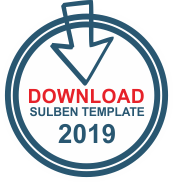Improving Teachers' Capability in Writing Scientific Articles through Training and Mentoring in West Sumatera
 ), Martias Martias(2), Wawan Purwanto(3), Ahmad Arif(4), Dwi Sudarno Putra(5), Yasep Setiawan(6),
), Martias Martias(2), Wawan Purwanto(3), Ahmad Arif(4), Dwi Sudarno Putra(5), Yasep Setiawan(6), (1) Universitas Negeri Padang
(2) Universitas Negeri Padang
(3) Universitas Negari Padang
(4) Universitas Negeri Padang
(5) Universitas Negeri Padang
(6) Universitas Negeri Padang
 Corresponding Author
Corresponding Author
Copyright (c) 2024 Wawan Purwanto, hasan maksum, Dwi Sudarno Putra, Martias Martias, Ahmad Arif, Yasep Setiawan MT
DOI : https://doi.org/10.24036/sb.04970
Full Text:
 Language : en
Language : en
Abstract
Keywords
References
Al-Samarraie, H., & Saeed, N. (2018). A systematic review of cloud computing tools for collaborative learning: Opportunities and challenges to the blended-learning environment. Computers & Education, 124, 77–91, https://doi.org/10.1016/j.compedu.2018.05.016
Appleton, J. J., Christenson, S. L., Kim, D., & Reschly, A. L. (2006). Measuring cognitive and psychological engagement: Validation of the student engagement instrument. Journal of School Psychology, 44, 427–445, https://doi.org/10.1016/j.jsp.2006.04.002
Badia, A., & Becerril, L. (2016). Renaming teaching practice through teacher reflection using critical incidents on a virtual training course. Journal of Education for Teaching, 42(2), 224–238, https://doi.org/10.1080/02607476.2016.1143146
Badia, A., & Campos, L. C. (2018). Teachers learn about student learning assessment through a teacher education process, Studies in Educational Evaluation, 58(2), 1-7, https://doi.org/10.1016/j.stueduc.2018.05.004
Baharom, S., Khoiry, M. A., Hamid, R., Mutalib, A. A., & Zah, N. (2015). Assessment of psychomotor domain in a problem-based concrete laboratory. Journal of Engineering Science and Technology, Special Issue on UKM Teaching and Learning Congress, 1–10.
Bower, B. M., Dalgarno, G.E, Kennedy, M.J. Lee, & Kenney, J. (2015). Design and implementation factors in blended synchronous learning environments: Outcomes from a cross-case analysis. Computers & Education, 86(1). 1–17, https://doi.org/10.1016/j.compedu.2015.03.006
Bransford, J., Brown, A., & Cocking, R. How People Learn: Brain Experience, and School. Washington, DC: National Academy Press, 2006
Casner-Lotto, J., & Barrington, L. (2006). Are they really ready to work? Employers’ perspectives on the basic knowledge and applied skills of new entrants to the 21st century U.S. workforce. Massachusetts Avenue NW Suite 700E, Washington, DC 20001: Partnership for 21st Century Skills.
Chen, C.-H., & Yang, Y.-C. (2019). Revisiting the effects of project-based learning on students’ academic achievement: A meta-analysis investigating moderators, Educational Research Review, 26, 71–81, https://doi.org/10.1016/j.edurev.2018.11.001
Maksum, H., & Purwanto, W. (2019). Development of a Model for Automotive Vocational Education (AVE) Learning in Technical and Vocational Education Training, International Journal of Innovation, Creativity and Change, 9(10), 279-294
Maksum, H., Purwanto, W., Baharudin, A. (2019). Problem-based Learning Method with the Teaching Factory Concept for Improving Student Learning Scores in the Steering, Brake, and Suspension System Course, International Journal of Innovation, Creativity and Change, Special Edition, ICOVET, 8(1), 153-162.
Refbacks
- There are currently no refbacks.
Copyright (c) 2024 Wawan Purwanto, hasan maksum, Dwi Sudarno Putra, Martias Martias, Ahmad Arif, Yasep Setiawan MT

This work is licensed under a Creative Commons Attribution 4.0 International License.







